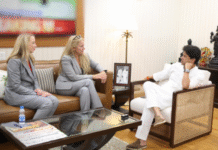San Francisco– Microsoft and Australia’s leading telecommunications company Telstra have extended their long-standing strategic partnership to harness new-age Internet of Things (IoT), Edge, artificial intelligence (AI) and digital twin technologies.
Telstra and Microsoft will build a digital twin across its own commercial buildings with an initial deployment of five buildings.
When fully deployed, this represents one of the largest Azure-based digital twins in Australia.
Once complete, the digital twin will allow Telstra to establish a digital nerve centre that promises enhanced transparency by modernising business processes and the work environment, enhancing digital interaction between personnel and enabling Telstra to improve operational efficiency.
Combining Microsoft Azure and Telstra’s network also supports Australian developers and independent software vendors (ISVs) as they develop solutions that leverage AI, low latency and increased resilience, the companies said in a statement.
“The announcement with Microsoft formalises the several streams of work we are already collaborating on. The global scale of Microsoft’s platform, tools, and applications, together with Telstra’s network solutions, reliability and leadership, will drive new and unique solutions for Australia,” said Telstra CEO Andrew Penn.
Telstra is working with Microsoft Azure as its preferred cloud provider for ongoing internal digital transformation.
Azure will provide the digital foundations for Telstra’s strategic plan to streamline and simplify operations, transitioning from legacy and on-premise applications to modern cloud-based solutions.
“The broad adoption of cloud and 5G technology will create new opportunities for businesses worldwide, including in Australia,” said Satya Nadella, CEO, Microsoft.
“We’re expanding our partnership with Telstra and bringing together the power of Azure and Telstra’s network to build new solutions in critical areas like asset tracking, supply-chain management, and smart spaces, harnessing the latest advances in AI, digital twins and mixed reality”. (IANS)








